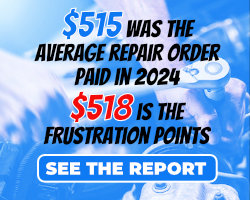Instagram VS Vine Video – and your dealership
This afternoon, Instagram rolled out a major update that supports the creation of 15 second video clips, which raises the obvious question — what does this mean for Vine, which everyone describes as “like Instagram, but with video?”
Interestingly, at around the exact time I saw Instagram’s announcement, our Vine account was followed by a string of transparently spammy accounts, the first burst of its kind I’ve seen on our Vine so far:

There’s something very “Instagrammy” about the way these spam accounts look. Could it be this was a coordinated effort to help convince people to shut down their Vines? Is there such a thing as a strategic Spambot onslaught? Surely not.
The new Instagram Video feature is pretty much like you’d expect. From the screen where you used to choose between uploading an existing photo and snapping a new one, you now have the option to select a video camera icon:
From there, you simply hold down the record button in small bursts until you have enough video to post.
What I like about Instagram Video:
- Editability — Bits of video within your composition are shown on a status bar, and you can double tap to delete the last bit and keep recording. This is a HUGE step ahead of Vine, in which each creation is an “all or nothing” venture.
- The filters look great and have fun names like Clarendon, Vesper, Brooklyn, and Moon. Being able to instantly preview the various filters is a wonderful touch, as well.
- With Instagram, you get 15 seconds of video instead of Vine’s 6 (anyone remember Viddy?), and while you don’t have to use all 15, it’s nice to have the extra time if you want it.
- I appreciate the fact that Instagram Video doesn’t automatically loop — if you want to see the video again, you can just restart it. Vine’s idea of continuous looping is nice in theory, and has led to some wonderfully creative posts, but in reality, watching someone take the same shot at a bar fifteen times in a row gets old fast.
- Just like with Vine, the Instagram Videos get saved to your Camera Roll so you can reuse it for something else.
What I don’t like about Instagram Video:
- The Instagram Record Button. Vine’s touch screen record feature makes recording tiny video clips and stop motion animation super easy. Instagram’s record button is not as sensitive, which seems to encourage more static shots rather than Vine’s touch and go. If you lightly tap the record button in a Vine-like fashion, you get an annoying message that says “Press and hold to record.”

- Just like Instagram pictures, when the Instagram Videos are tweeted, you can’t watch them within your Twitter stream.
- As with Vine, you can’t use bits of prerecorded video–everything has to be created on the spot.
Is the bell tolling for Vine? I don’t think so. Many people who don’t have Vine accounts still appreciate being able to watch Vines from within their Twitter stream, which is a huge advantage Vine has over Instagram Video. Certainly, this is a significant obstacle in Vine’s path to become a thriving, standalone social network, though.
No matter what kind of car you sell, it’s likely that Instagram already has an active following you’ll be welcome in. This video option is just that — another option — to help people get to know your inventory, your team, and your culture.
I’m more excited about Instagram as a tool for customer outreach than I’ve ever been, and this video component fuels that fire. While not a substitution for “traditional” videography, being limited to such a short amount of time helps the cameraperson think in terms of capturing only the shots that are most compelling and assembling a narrative out of seemingly disparate pieces — practice that makes both Vine and now Instagram Video immensely valuable.
I’ve already read some negative industry reactions to this update, along the lines of “that’s it? How unoriginal.” But I see such blowback as a validation of my point. Few platforms resist vendor-generated content like Instagram does, because of its intimate, behind-the-scenes sensibility. This closeness is what makes Instagram feel so real, and the brand feel so authentic, despite its recent PR missteps and the fact that, well, it’s owned by Facebook.
Online, our Sixth Sense is not seeing dead people but perceiving realness, and in the same way callers get frustrated when they’re transferred to an overseas call center, your social following will know if you’re right there with them or if someone has been hired to “stimulate social engagement” from afar.
I look forward to seeing where this goes. Has anyone downloaded this latest update?
Let me know what you think in the comments box below!










